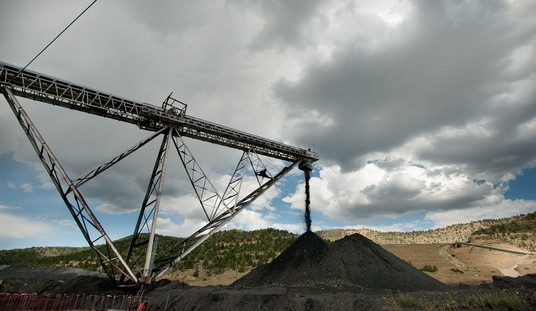This week as Joe Biden proclaimed that “inflation is coming down in America,” most Americans needed only to look into their sparse wallets to know he was full of malarkey. Biden went on to declare that because November Bidenflation ticked down slightly — by 0.64% — that’s somehow something to celebrate. I mean, at least it’s not double digits, Jack.
Some welcome news on the economic front. pic.twitter.com/xii4FwC4Hf
— Joe Biden (@JoeBiden) December 13, 2022
What Biden refuses to admit is that Bidenflation is still at 40-year highs. Simply put, most Americans aren’t feeling “optimistic about the holidays” or “the year ahead” just because Bidenflation is not “rising in double digits” like inflation in other parts of the world, in Biden’s America, we should somehow be satisfied it’s only 7.11%. Whatever we do, we shouldn’t notice there are fifteen countries with lower inflation rates than the U.S. I mean, why would we want that?
Global Inflation Rates… pic.twitter.com/VtQIki2WRL
— Charlie Bilello (@charliebilello) December 13, 2022
In reality, Americans aren’t feeling much, if any, relief. Biden’s continued disastrous economic policies and inaction on issues like drilling are continuing to drive costs higher for every purchase, from housing to the gas pump to the grocery store and beyond. Inflation came in lower than forecasted for November. However, housing, food, and energy prices remained significant contributors to rising consumer prices. And those inflation-driven higher prices aren’t being mitigated by a 0.64% drop, no matter how the country’s economic health is spun from the presidential podium.
To quantify the country’s economy and its health, economists have taken the most recent Bureau of Labor and Statistics (BLS) data on the U.S. unemployment rate (a stagnant 3.7%) and added it to the most recent rate of U.S. inflation (November’s 7.11%). The sum functions as a snapshot in time of America’s economy as a whole. Although originally coined “the discomfort index” by policy economist Arthur M. Okun in the 1970s, today, the sum of these two rates is now known simply as the U.S. Misery Index.
Current U.S. Misery Index: Unemployment 3.7% + Inflation 7.11% = 10.81%

Since unemployment and inflation significantly impact the average American wage earner’s spending power, the Misery Index also gauges the negative impact Bidenflation has on the declining quality of American life. And even though inflation crept down slightly in November, it shows no signs of cooling, causing the Fed to raise interest rates this week to their highest levels since 2006.
Tomorrow's news today…
BREAKING: THE FED HIKES INTEREST RATES FOR THE 7TH TIME THIS YEAR, 50 BPS INCREASE TO 4.25-4.50%. BALANCE SHEET REDUCTION CONTINUES. POWELL SIGNALS MORE TIGHTENING AHEAD BUT A MUCH SLOWER PACE OF RATE HIKES IN 2023.
— Charlie Bilello (@charliebilello) December 13, 2022
November’s slight decline in the rate of U.S. inflation doesn’t mean that all prices for all goods and services fell; it simply means some prices fell or aren’t rising as quickly as they were earlier in the year. The most recent BLS news release stated that inflation hasn’t hit just one or two price sectors of the economy. The Consumer Price Index (CPI), which measures the overall change in prices consumers paid for goods and services, rose 0.1% in November. During the same period, the prices for shelter (↑ 0.6%), food (↑0.5%), and apparel (↑0.2%) were the largest contributors to the monthly seasonally adjusted all-items increase. Recreation (↑0.5%) and personal care (↑0.7%) were among those that also increased over the last month. Used cars and trucks (↓2.9%), gasoline (↓2.0%), electricity (↓0.2%), medical care (↓0.7%), and airline fares (↓3.0%) saw a decrease.
Related: Democrats Are Getting Very Nervous About the Fed’s War on Inflation
With everyday consumer prices at or near record highs, many Americans plan to cut back on holiday spending and travel. And who can blame them? According to AAA, Thursday’s national average for gasoline was $3.193 per gallon, which is down $0.566 per gallon from November but still $0.125 per gallon higher than a year ago. Gas prices in the Western states remain high; for example, California has an average price of $4.446 per gallon. And no matter how we look at it, gasoline prices are still higher than they were at the end of the Trump administration. And what about wage growth? How are America’s workers keeping up with these higher prices? Not so well, it turns out.
US wage growth has failed to keep pace with rising consumer prices for a record 20 consecutive months. This is a decline in prosperity for the American worker & the primary reason why the Fed will hike rates for the 7th time this year at tomorrow's meeting.
Charting via @ycharts pic.twitter.com/i8KlYBs5hR
— Charlie Bilello (@charliebilello) December 13, 2022
According to experts like founder and CEO of Compound Capital Advisors Charlie Bilello, twenty consecutive months of negative real wage growth have led to “a decline in prosperity for the American worker” and, in turn, an uncomfortably high Misery Index. American workers’ money doesn’t go as far as it used to, no matter how rosy Biden tries to paint the economic picture. But how much has Bidenflation cost the average American? As PJ Media’s Matt Margolis reported, economist E.J. Antoni “estimates that the typical American household has lost more than $7,000, owing to inflation and rising interest rates,” since Biden took office. $7,000 is no small chunk of change for most Americans.
Today’s economic reality — whether Biden admits it or not — is rising prices, a volatile stock market, stagnant wages, climbing mortgage rates, and a weaker and weaker dollar. The truth is Bidenflation is fueled by the failed economic policies of the Democratic Party and their CEO, who don’t intend to right the ship because somehow this misery is for our own good.









Join the conversation as a VIP Member